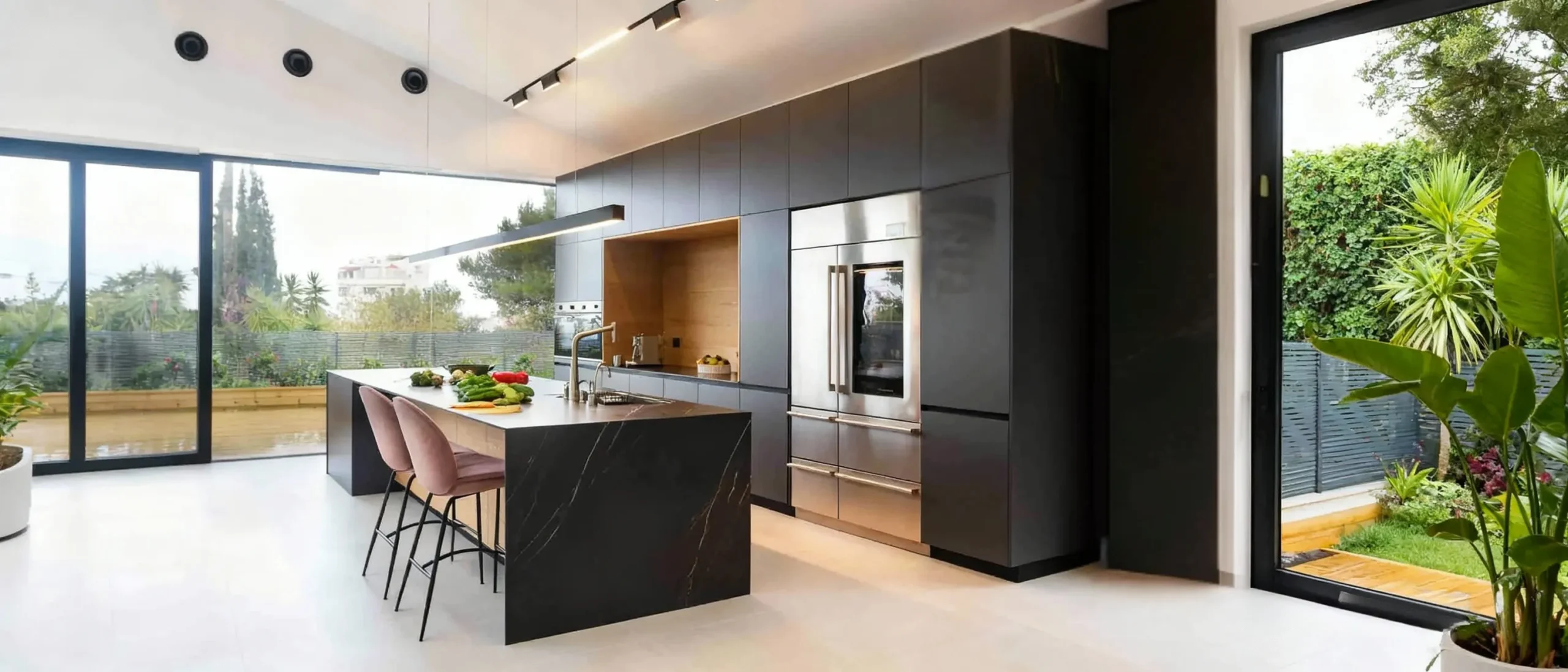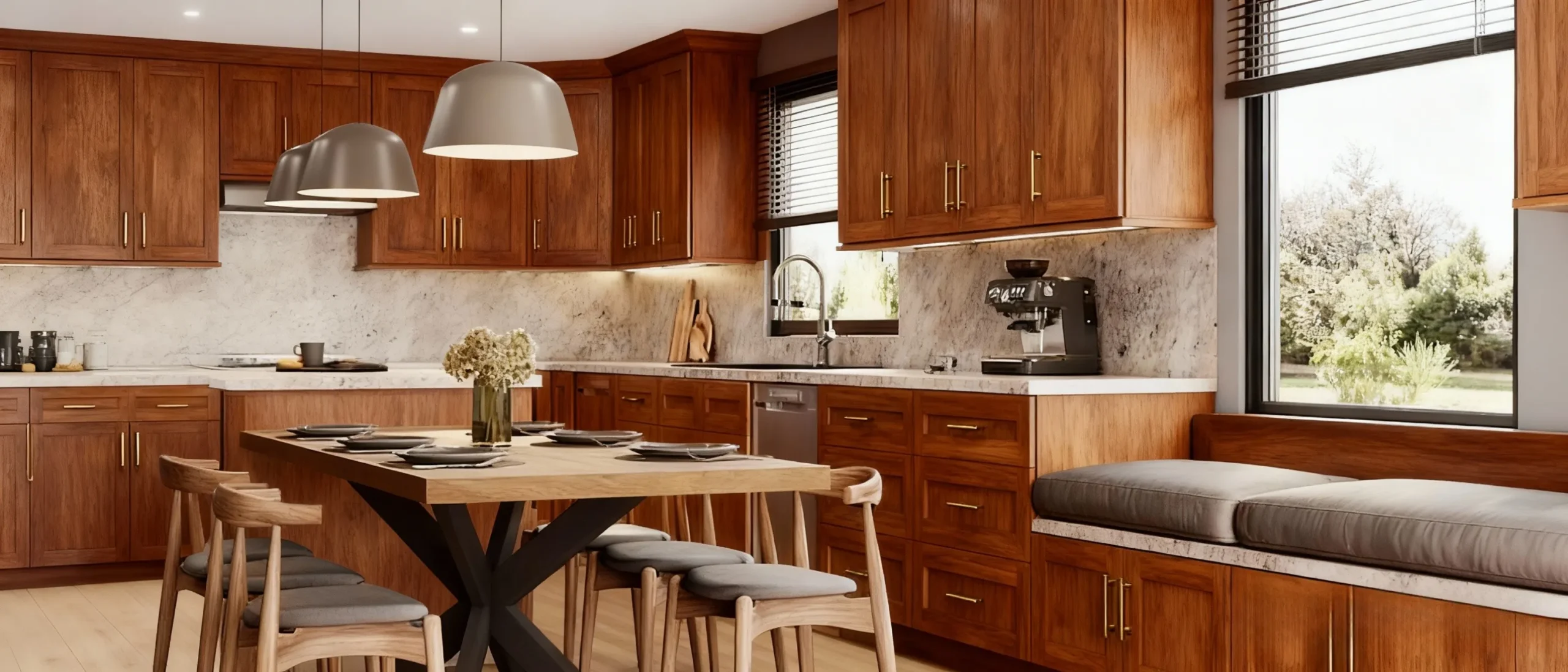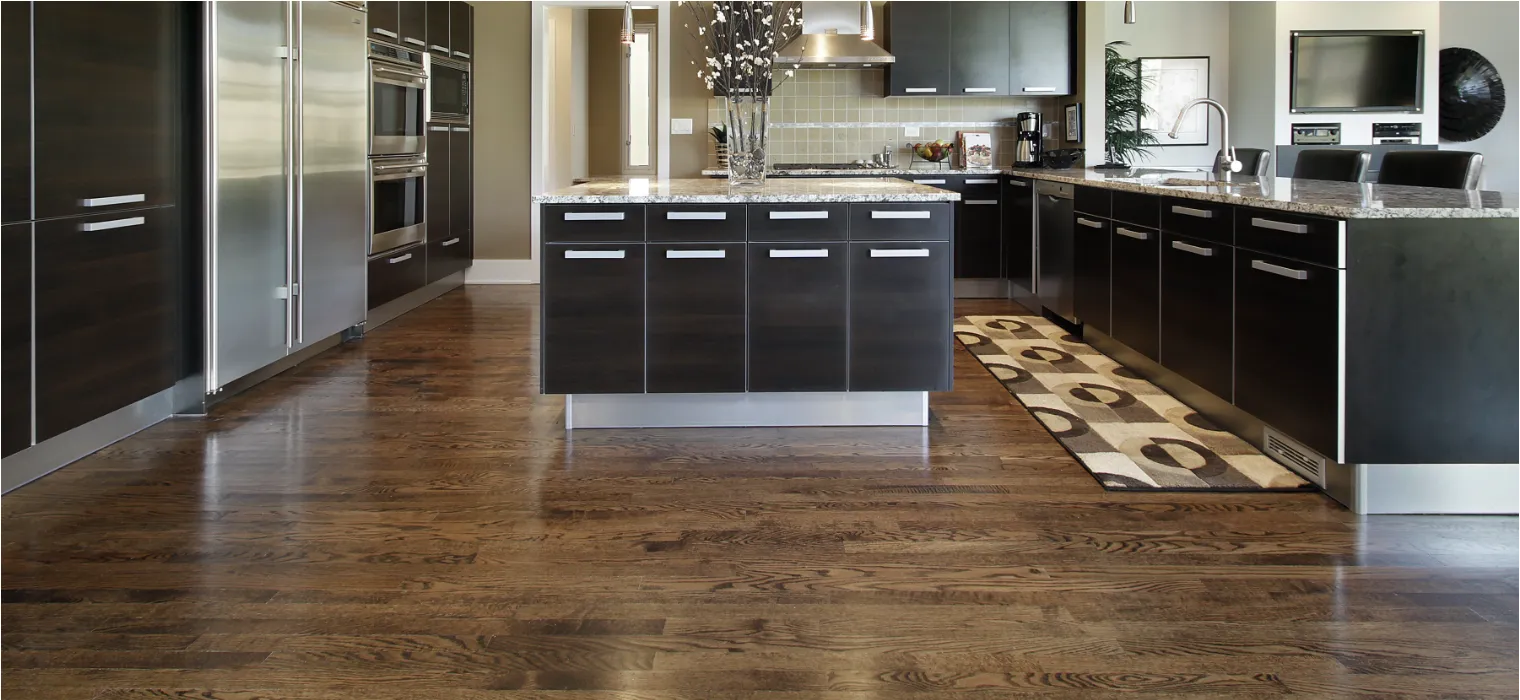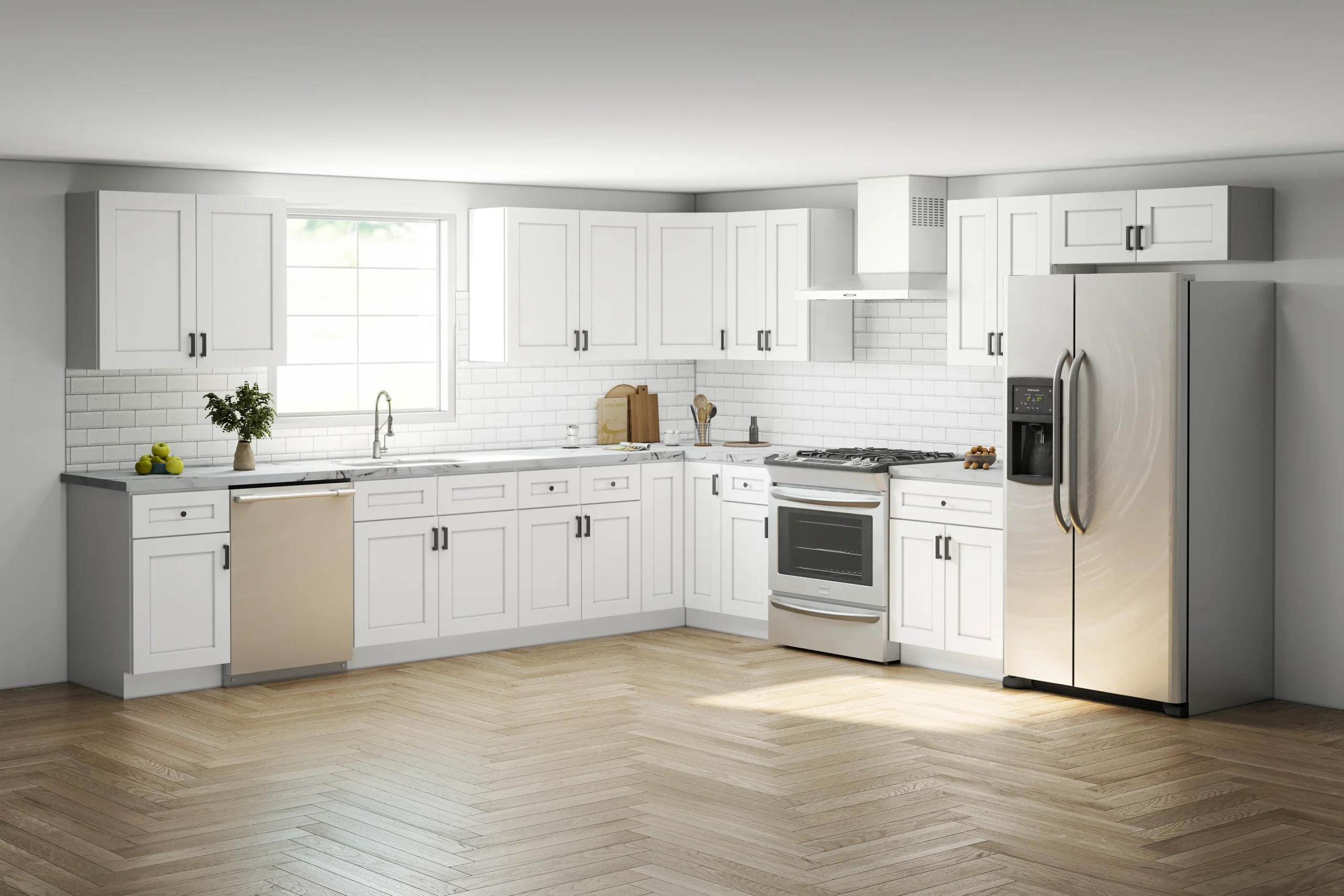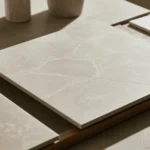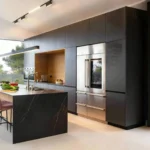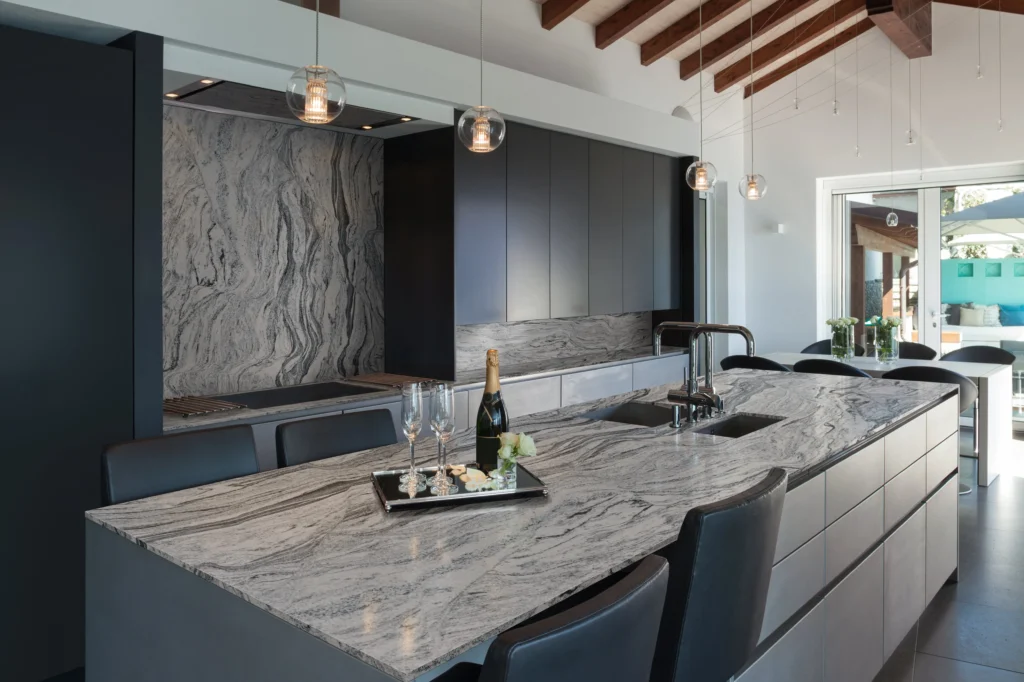
Stuck between too many stones and too little time? Worried about stains, seams, or style? This guide turns choices into clear steps that fit your room, budget, and routine.
Pick granite by three lenses: color harmony, finish performance, and install details. Start with your cabinet color and light. Choose a finish you can maintain. Plan thickness, edges, and seams with your fabricator. You get beauty, durability, and fewer surprises.
You want answers you can act on today. Below, each question gives a direct path first, then deeper rules, tables, and quick checks you can use in the showroom.
Are granite countertops still popular in 2025?
Granite continues because it is durable, heat tolerant, and unique. It competes with quartz and porcelain, but real stone still wins on natural movement and long life when sealed and cared for.
Granite remains a strong pick in 2025. Choose calmer patterns for modern kitchens, or dramatic veining for statement islands. Pair with matte hardware and soft lighting. Use slab-thickness and edge choices to control cost and style without losing strength.
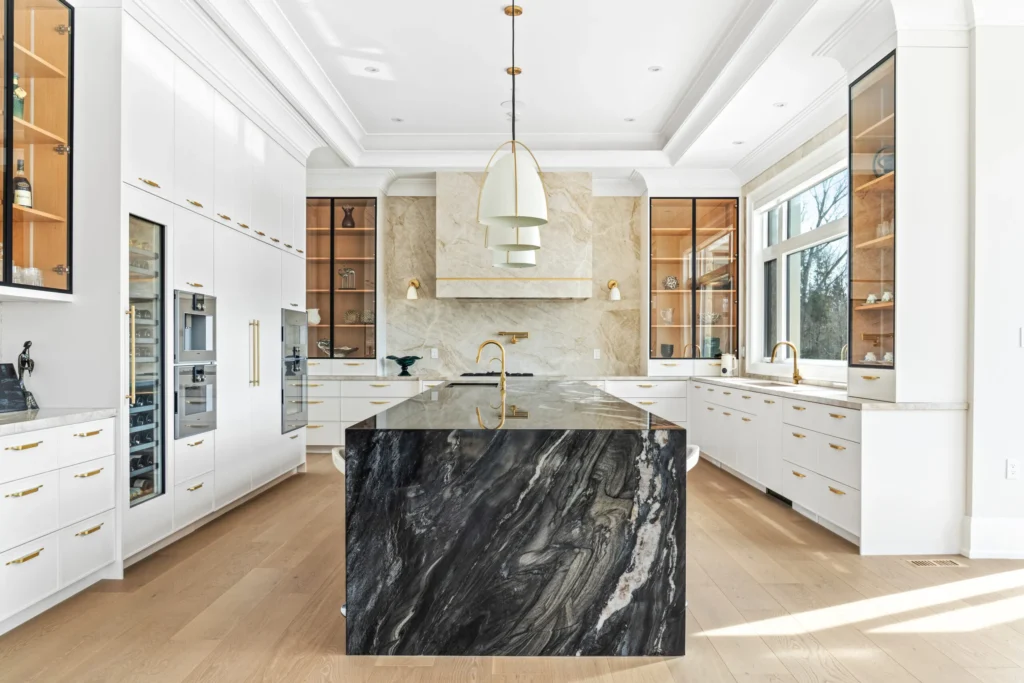
What keeps granite relevant
- Long service life with basic care.
- Heat resistance for daily cooking.
- One-of-a-kind slabs that avoid a “printed” look.
Where it fits best
- Busy family kitchens that see heat and knives.
- Islands where natural movement can be a focal point.
- Homes that want classic value and real-stone feel.
Which granite colors are trending in 2025?
Trends lean calm and warm. Light creams, soft taupes, and gentle gray-whites work with many cabinets. Deep charcoals and near-black stones frame light rooms and hide mess well.
Choose light, low-contrast stones for small spaces. Choose bold, high-contrast stones for large islands. Match undertones of cabinets and floors. Use the backsplash to bridge any gap.
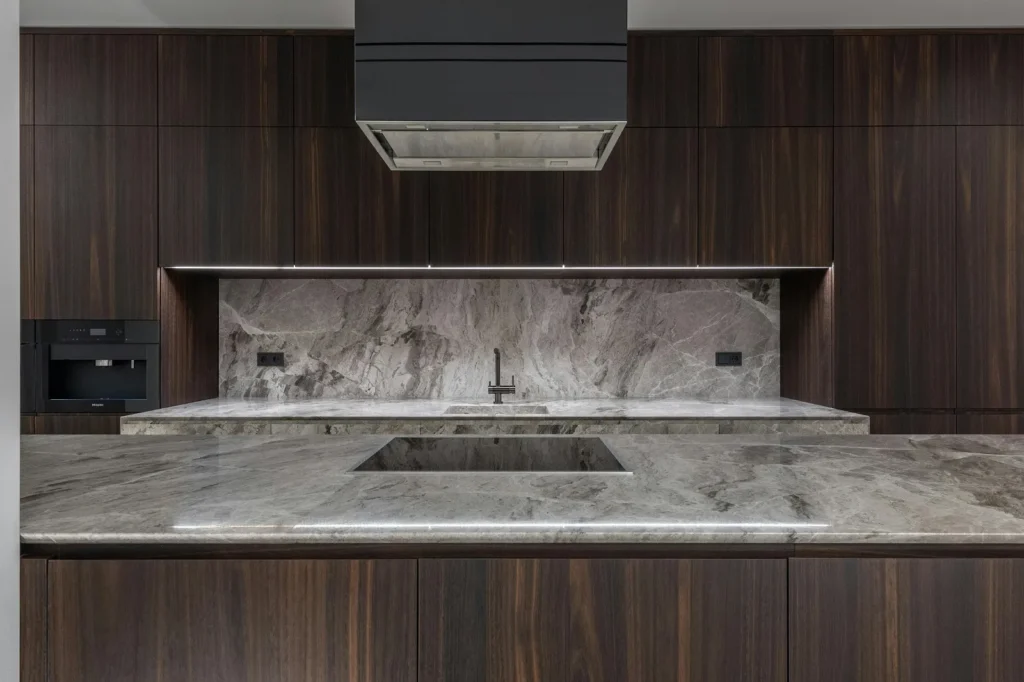
Undertone map
| Cabinet tone | Granite direction | Why it works |
| Warm white / cream | Soft taupe or beige | Keeps the palette warm and calm |
| Pure white | Gray-white with fine pattern | Clean modern look without busyness |
| Mid gray | Cream or charcoal | Adds contrast while staying balanced |
| Natural wood | Putty, mushroom, or soft gold | Echoes wood warmth without orange |
| Black cabinets | Light cream or marble-look | Strong, tidy contrast |
Quick showroom checks
- View slabs under neutral light, not only daylight.
- Stand 2–3 meters back to judge pattern scale.
- Bring a cabinet door and floor sample for undertone match.
Honed, polished, or leathered: which is best?
No single finish wins. Polished is shiny and wipes fast. Honed is matte and soft to the eye. Leathered adds texture that hides smudges. Pick by light level, cleaning habits, and style.
Use polished for easy wipe-downs and a classic look. Use honed to cut glare and modernize bright rooms. Use leathered when you want grip and subtle texture that hides fingerprints and crumbs.
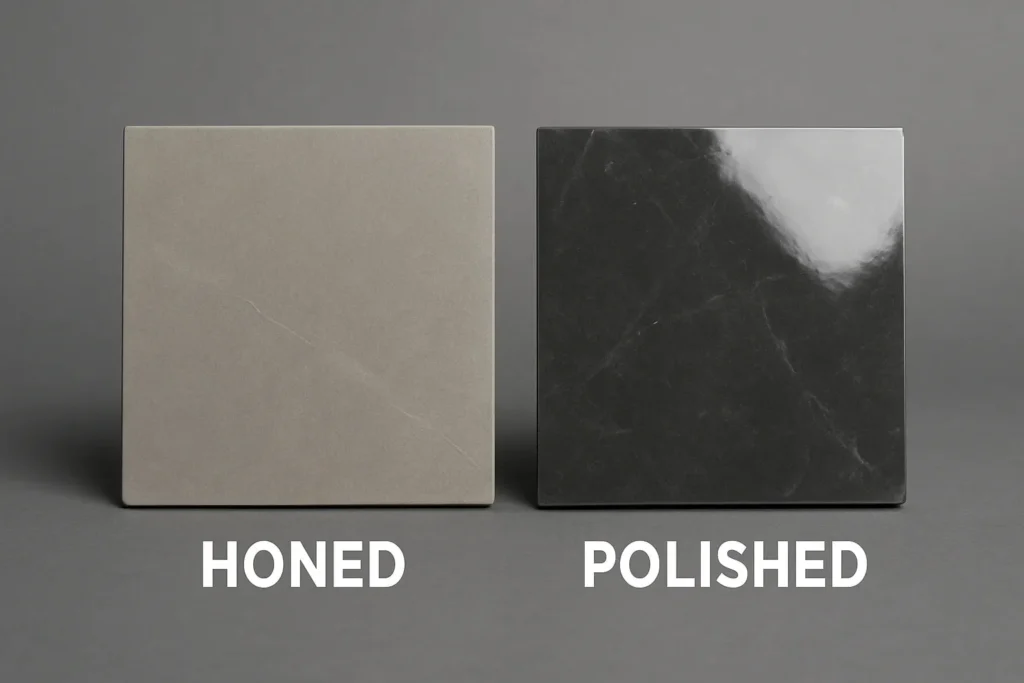
Finish comparison
| Finish | Look/feel | Pros | Watch-outs | Best use |
| Polished | Glossy, reflective | Fast cleaning, stain resistant | Shows fingerprints on dark tones | Low-light rooms; classic kitchens |
| Honed | Matte, soft | Modern, low glare | Can show oils; seal well | Bright rooms; minimal styles |
| Leathered | Textured, matte | Hides smudges; good grip | Texture can trap crumbs | Family kitchens; rustic-modern |
Practical tips
- Ask the shop for a sealed test chip in your finish.
- Wipe with a damp microfiber; avoid harsh pads.
- Re-seal per label when water no longer beads.
Which granite suits white cabinets best?
White cabinets like balance. Calm gray-whites keep the room light. Warm creams add softness. Bold charcoal or black granite creates sharp contrast and a modern edge.
Pick a stone that matches the cabinet’s undertone. Cool whites prefer gray-white stone. Warm whites prefer cream or taupe. Use backsplash grout near the stone tone to tie it together.
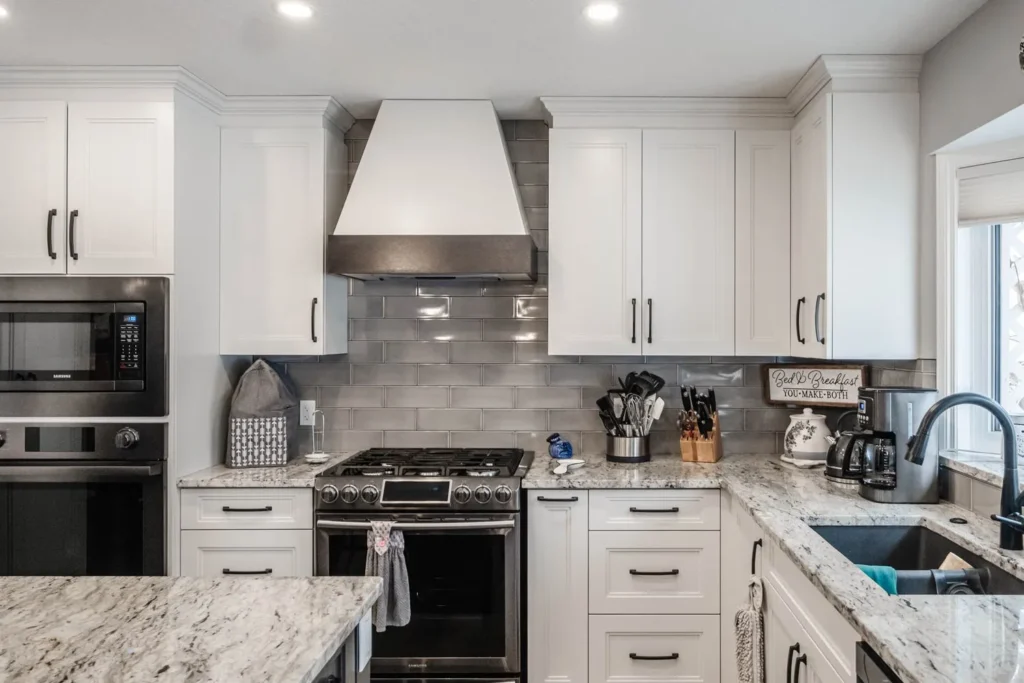
Pairing guide for white cabinets
| White type | Granite pick | Backsplash idea |
| Cool white | Gray-white with fine movement | Large matte subway, cool grout |
| Warm white | Cream or putty tones | Zellige-look with warm grout |
| Bright white | Light marble-look | Full-height slab or stacked tile |
| Off-white | Taupe or mushroom | Honed stone-look porcelain |
Keep it balanced
- Avoid busy stone plus busy tile.
- Add a thin dark line (hardware or window frame) to sharpen edges.
- Match sheen across surfaces to avoid mixed glare.
Which granite matches dark cabinets best?
Dark cabinets want light relief. Creams and light taupes brighten the room. Gray-white stones cool heavy palettes. If you prefer dark-on-dark, pick a black or charcoal with fine movement and good task lighting.
Use a light counter when floors and walls are also dark. Use a dark counter when walls are bright and the kitchen has strong daylight. Keep the backsplash simple so lines stay clean.
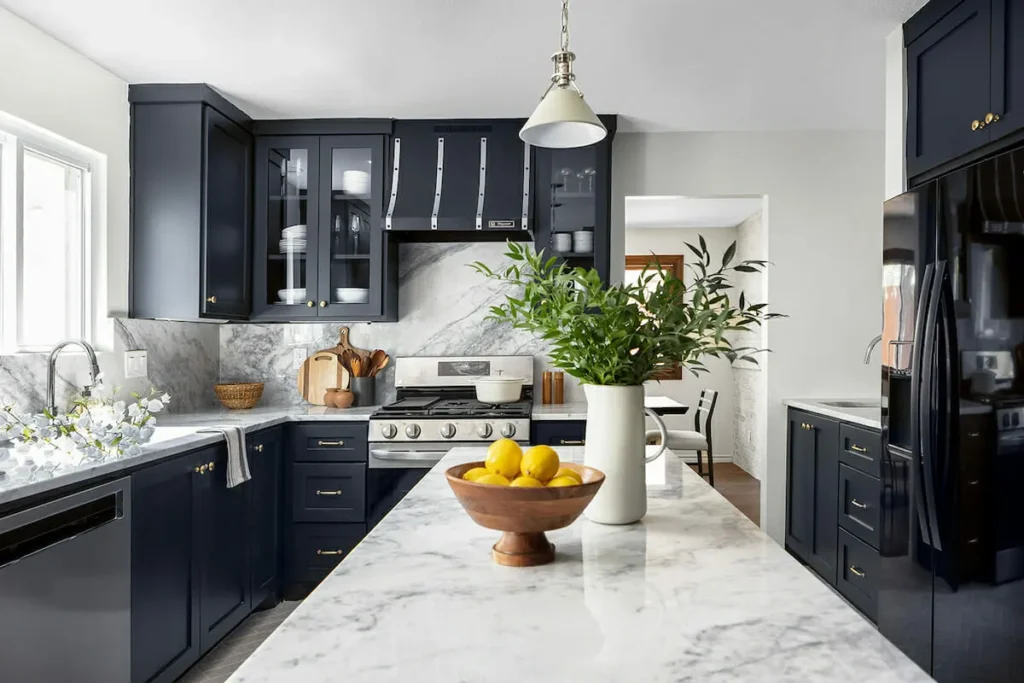
Pairing guide for dark cabinets
| Dark cabinet | Granite pick | Lighting note |
| Black matte | Cream or soft taupe | Add warm under-cabinet strips |
| Espresso wood | Gray-white or putty | Neutral light to avoid orange |
| Dark gray | Light marble-look | Bright, even task lighting |
| Navy | Warm cream with fine specks | Keep grout warm, not stark white |
Quick checks
- Photograph the sample in your room at night and day.
- Hold hardware finishes beside stone; match temperature.
- If the room feels heavy, lighten the backsplash first.
What slab thickness should I choose?
Most pick 3 cm for strength and fewer supports. 2 cm saves cost and weight but needs build-ups at edges or extra support. Thick-looking edges can be built with mitered drops if you want drama.
Choose 3 cm for islands and busy kitchens. Choose 2 cm where budgets are tight or for wall niches. Discuss spans, overhangs, and support with your fabricator before you order.
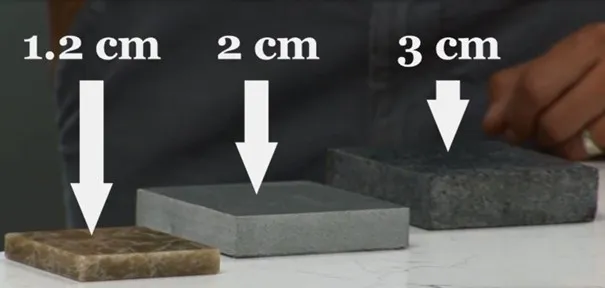
Thickness and span guide
| Thickness | Typical span (no support) | Notes |
| 2 cm | Short spans; add support at overhangs | Consider build-up at sink runs |
| 3 cm | Longer spans; fewer brackets | Most common; sturdy for islands |
| Mitered drop | Visual thickness only | Adds cost; plan seam lines |
Edge profile cues
- Simple square or small radius feels current.
- Ogee and heavy curves read more traditional.
- Match profile to door style and room lines.
How many seams will my island need?
Seams depend on slab size, path into the house, and the island’s length. Fewer seams look cleaner. Good fabricators place seams where light is soft and patterns align.
Plan island length within typical slab lengths when possible. If you need seams, center them or hide them under cooktops or sinks. Choose stones with gentle movement for easier matching.
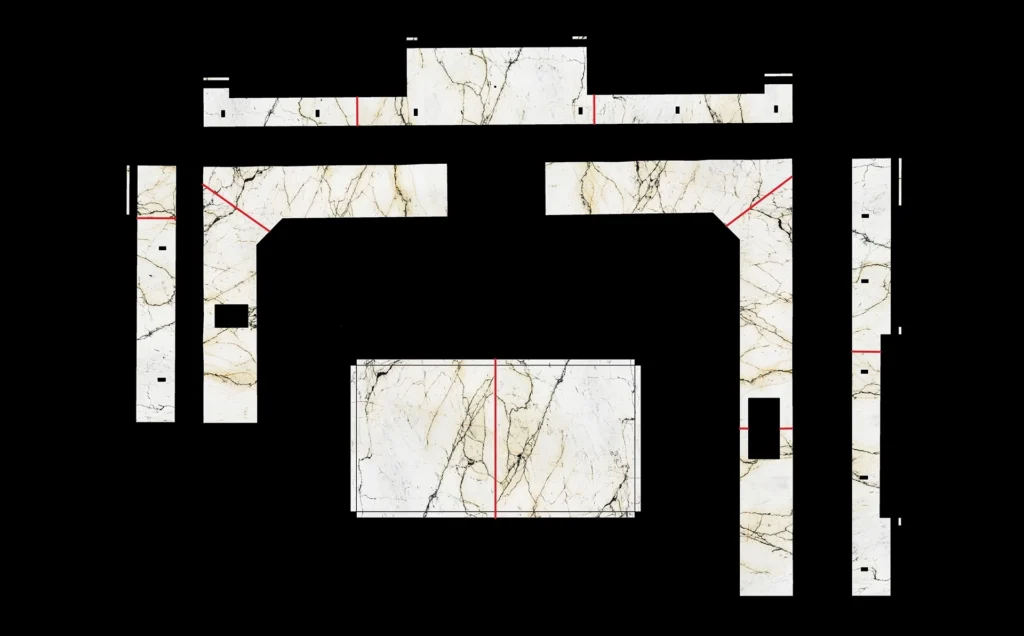
Seam planning table
| Island length | Likely seams | Placement tip |
| ≤ 9 ft | None | Use one slab if path allows |
| 9–12 ft | 1 seam | Center seam or under fixture |
| > 12 ft | 2 seams | Balance seams away from corners |
Seam quality checks
- Ask for book-matching where patterns meet.
- Feel the joint for height difference.
- Check color of seam adhesive in daylight and task light.
How much do granite countertops cost in 2025?
Costs vary by stone rarity, thickness, edges, cutouts, and install complexity. Slab price is only part of the bill. Fabrication and logistics add up fast.
Budget with a per-square-foot range from entry to premium, then refine with a line-item quote. Keep edge profiles simple and minimize seams to control labor. Ask for a detailed template plan.
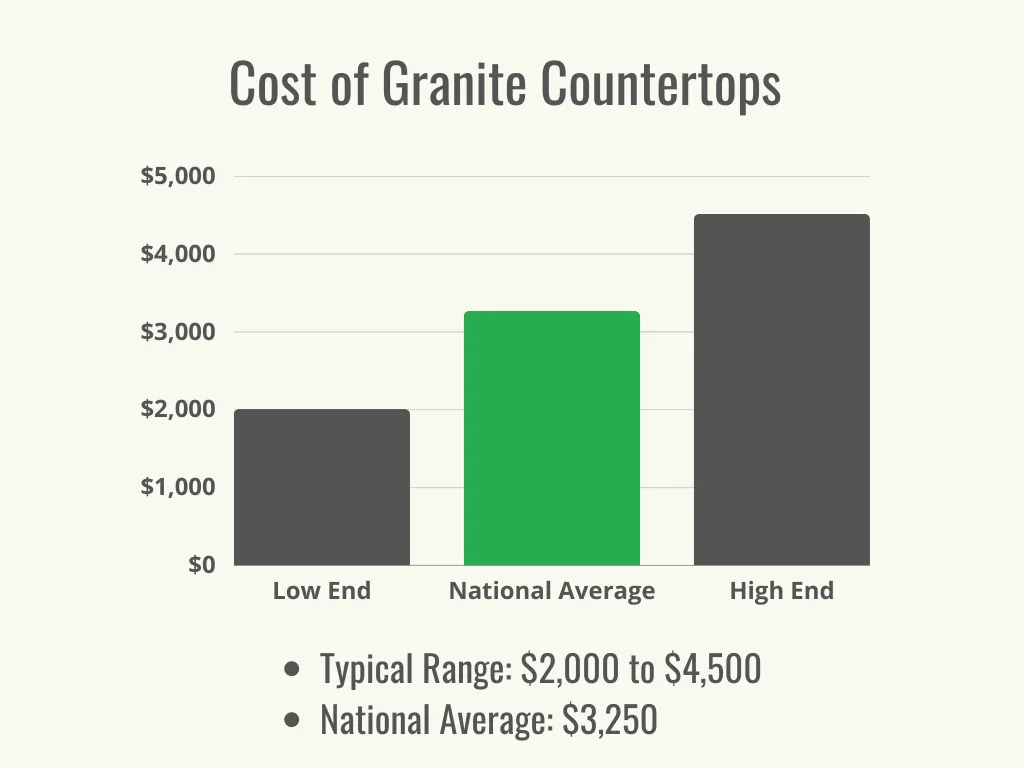
Cost drivers
| Item | Impact | Notes |
| Stone level | High | Rare patterns cost more |
| Thickness | Medium | 3 cm raises material cost |
| Edge profile | Medium | Simple edges save labor |
| Cutouts | Medium | Sinks, cooktops, outlets |
| Seams/transport | Medium | Long runs need more handling |
Saving without regret
- Use a premium stone on the island and calmer stone on perimeters.
- Keep the same edge everywhere.
- Combine installs with backsplash to reduce extra trips.
Do I need to seal granite every year?
Many sealed granites last longer than a year between coats, while others need more frequent attention. Test your counter with a water bead test. If water darkens the stone fast, it is time to seal.
Follow the sealer label for cure time and recoat rules. Clean gently, avoid harsh acids, and wipe spills quickly. Proper sealing plus good habits protect color and reduce stains.
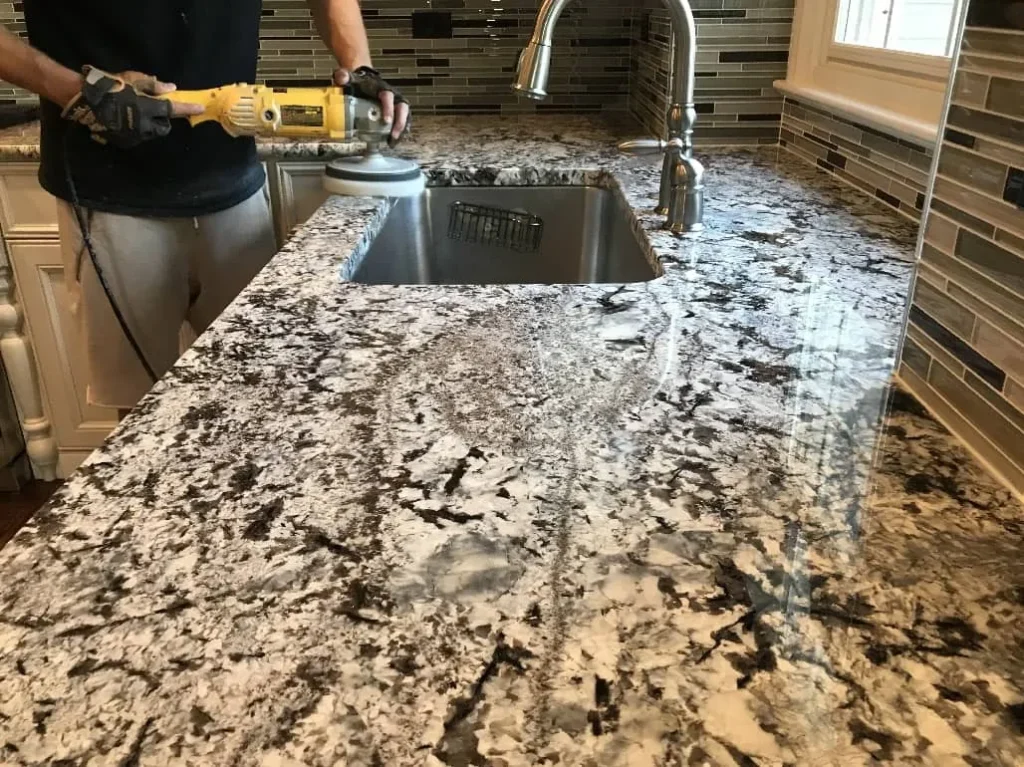
Care schedule (typical)
| Task | Frequency | Notes |
| Water bead test | Every 6 months | If water darkens fast, re-seal |
| Sealing | 1–3 years | Depends on stone and use |
| Daily wipe | Daily | pH-neutral cleaner or mild soap |
| Deep clean | Monthly | Remove film, refresh sheen |
Simple sealing steps
- Clean and dry the surface.
- Apply sealer per label, keep surface wet for the dwell time.
- Wipe off excess; buff dry.
- Retest with water after cure.
Can granite pair with full-height backsplashes?
Yes. A full-height slab looks sleek and reduces grout lines. It ties the counter and wall into one clean plane. It costs more and needs careful outlets and seam planning.
Use calm counters with calm slab backsplashes for a minimal look. If your counter is bold, use a quieter tile to balance the wall. Plan outlet strips under cabinets to avoid mid-wall cuts.
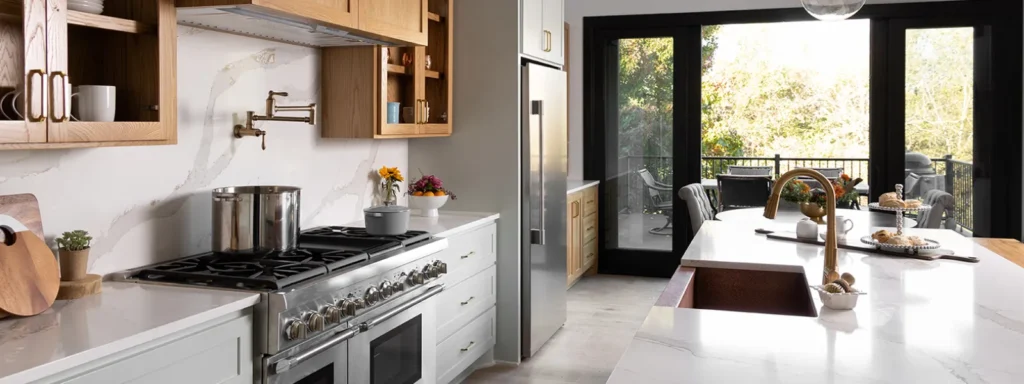
Planning notes
- Confirm slab thickness and wall weight limits.
- Align veins between counter and backsplash if possible.
- Dry-fit templates before cutting outlet holes.
When to skip full height
- Very busy stone in a small, low-light room.
- Tight budgets where tile can save cost.
- Walls out of plumb that need heavy work.
Conclusion
Choose a calm color that fits your light. Pick a finish you can keep clean. Plan thickness, edges, seams, and sealing. Good choices now save money and stress later.
FAQ
Are granite countertops outdated?
No. Granite stays popular due to durability and natural variation. Choose calmer patterns and matte finishes for a current look that works with modern cabinets and lighting.
How often should granite be sealed?
Test with water every six months. If water darkens the stone quickly, re-seal. Many kitchens need sealing every one to three years depending on stone and use.
Can you put hot pans on granite?
Granite tolerates heat better than many surfaces. Trivets still help prevent thermal shock and protect sealers and nearby caulk from repeated high temperatures.
What edge profile looks modern now?
Simple edges feel fresh: square, eased, or small radius. Heavy curves read more traditional. Keep one profile across the kitchen so lines look clean and intentional.
Do dark granites show fingerprints more?
Yes, especially in polished finishes. Choose honed or leathered textures to hide prints. Keep a microfiber cloth handy for quick wipes near busy zones.
Can granite be repaired if it chips?
Small chips often fill with color-matched epoxy. Larger damage needs professional repair and polishing. Save offcuts for future fixes when you choose your slab.
Is granite or quartz more durable?
Both are durable. Granite resists heat well and handles daily wear. Quartz offers uniform patterns and low maintenance. Pick by look, light, and how you cook and clean.
Can I use granite outdoors?
Many granites work outdoors. Choose UV-stable stones and proper sealing. Avoid dark stones in full sun if heat buildup is a concern. Use sturdy bases and weatherproof caulk.

